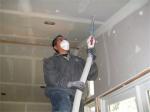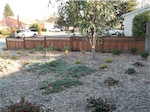Traditionally it has been difficult to understand the true relationship between the home building envelope and its energy consumption. In the past there has been no sure fire way to accurately determine exactly how your home utilizes its energy. Advancements in building science and testing technology now allow us to quantify and measure precisely how the home interacts in its surrounding environment. Similar to a doctor, we use testing information, combined with building knowledge to diagnose what parts of the home are operating inefficiently. We make recommendations, complete energy modeling and make energy improvements, then verify the results.
There are many great programs out there that subsidize the cost of most of these improvements for the homeowners. Energy Upgrade California (EUC) offers a rebate of up to $4,000 for meeting certain energy improvement standards. EUC has also done a great job in spreading the word about energy upgrades, and is helping reduce California’s energy consumption. Many counties are also offering additional rebates for energy upgrades, often for a limited time. For instance, Contra Costa County offers up to another $5,000 (unfortunately only until March 2012) for upgrades approved by the EUC program. If your home meets the energy targets it is possible that you may spend only a few thousand dollars or less to make significant improvements to your home. We have found that many people are not aware that some of the county rebates run out so soon. We encourage everyone to get an energy assessment and take advantage of the great opportunity to upgrade your home. To find out more information click EUC and Contra Costa County program.
To illustrate to clients the benefits of home energy upgrades, I will often use past homes as examples of the impact we can have on your energy consumption. I provide the following case study of a typical home to illustrate what the energy assessment does, and what benefits it may reap.
Case Study – The Typical Home: What We Did
We have found that most our customers are looking to improve their home energy efficiency for two reasons:- To save money and;
- To improve the comfort level of their homes.
- Reduce infiltration. Inadvertent air leakage into the living space is one of the most common reasons our homes are not efficient. Using thermal-image testing equipment we are able to locate the invisible leaks in the home. These leaks are usually prevented by making inexpensive improvements to the home, such as air sealing and weather stripping doors & windows.
- Improving or adding insulation to attic, crawl spaces, walls, floors, pipes, and HVAC systems. It is surprising how many homes have missing or no insulation at all. Many older homes are also built during times when the insulation requirements (the R-value) were much lower than it is today.
- Replace HVAC duct systems and duct sealing. In almost every single home we find that the HVAC system is disconnected at the joints, crushed, or rusted out. Essentially this means when you turn on the furnace or AC, air is leaking out of the duct system into crawl spaces and attics. Essentially you are spending money to heat non-livable spaces in your home.
- Replace furnace, hot water heater, and AC units. Many homes run equipment that is grossly inefficient. Diagnostic testing will determine if your home needs an upgraded system.
- Rodent and pest infiltration. In our inspections we often find that inefficient homes provide rodents access to your home as well as providing the tiny critters a comfortable living environment. We help find these access points and seal them.
- Mold and moisture. Crawl spaces are perfect breading grounds for mold and bacteria. In addition, these damp areas create cool air that infiltrates the home. Simple measures can protect the living environment from these areas. Often we apply inexpensive vapor barriers and seal air leaks.
The following pictures show what is common in many homes. Old and poorly installed insulation is falling out of place.









Excellent and practical ways to solve the problem of heat loss. BTW, how to process be a certified BPI ?
Thanks
Allen